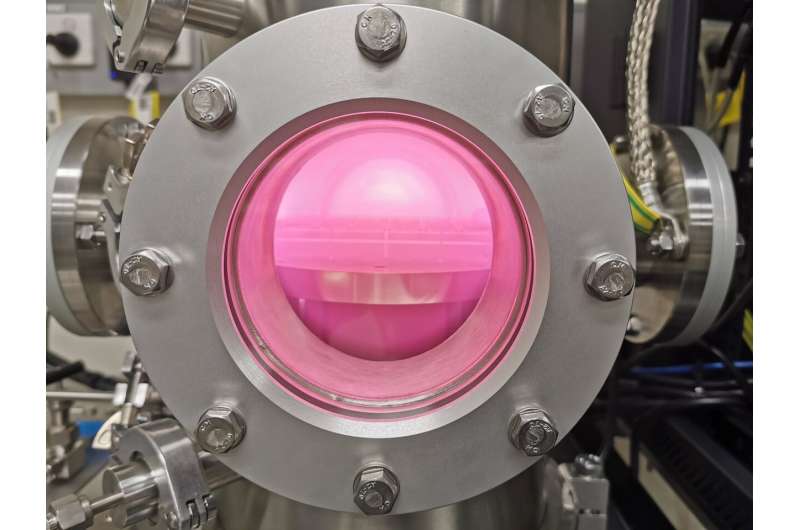Nano 'junk' could save lives

Nuisance particles loathed by manufacturers have found an innovative new purpose delivering life-changing drugs straight to cancerous tumors and diseased tissues.
Scientists at the Heart Research Institute in Sydney have developed a simple, cheap and efficient way to collect nanoparticles that can be used in the treatment of cancer, cardiovascular disease and Alzheimer's.
The work, published this week in the international journal Communications Physics, paves the way for exciting new therapies using a material previously seen as an undesirable by-product of manufacturing.
"Until now, plasma dust nanoparticles have been viewed as a nuisance by-product in technological applications which rely on plasma reactors," explains lead researcher and HRI physicist Dr. Miguel Santos. "Excitingly, we've been able to show these nanoparticles actually have real potential for therapeutics, particularly in the area of cancer and cardiovascular disease."
Nanomedicine is a rapidly emerging research field aimed at enhancing specific targeting, accumulation and controlled release of therapeutics, whilst minimizing effects on healthy tissue. But translation into clinical practice has been limited by the complexity and costs associated with development of safe, efficient and multifunctional nanomaterials, Dr. Santos says.

"Plasma dust are nano and micro-sized particles that are formed in reactive plasmas, often contaminating samples and reducing process efficiency and yield," he says. "What we've been able to show is that they actually have a use, and one that could save lives and boost quality of life."
This new paper proposes a simple but efficient way to collect plasma dust nanoparticles from plasma reactors. It uses a three-dimensional, well-shaped structure that ensures plasma dust is entrapped and not lost. This strategy significantly increases the yield of nanoparticles, making it more cost effective and ultimately facilitating upscaling for commercial and clinical applications.
"Our method significantly bolsters nanoparticle yield without the need for external manipulation, and can be adopted in existing plasma reactors," Dr. Santos says. The HRI team is currently testing their new nanotechnology in products fit for cancer, heart and dementia treatments.
More information: Miguel Santos et al. Substrate geometry modulates self-assembly and collection of plasma polymerized nanoparticles, Communications Physics (2019). DOI: 10.1038/s42005-019-0153-5
Journal information: Communications Physics
Provided by Heart Research Institute



















